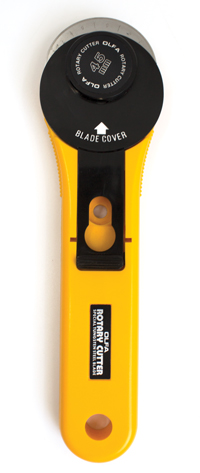Any Way You Slice It
August 9, 2018Slicing, dicing, crafting, or carving: no matter what sort of cutting you are doing, a sharp, precision knife will help you achieve crisp, clean lines in your cuts!
There are so many knives, blades, and cutters for sale, it can be difficult to determine what makes one better than the other. The first thing to look for is quality and durability, and we’ve got both of those covered! In addition to the OLFA products we have carried (and loved) for years, we are enlarging our selection to include many more products from Excel Knives, Blades, & Tools, ensuring that we are able to offer artists the best in high-quality cutting tools.
 Perfect for precision cutting, trimming, and stripping of paper, plastic, wood, cloth, and film, the lightweight body of Excel’s K1 Knife conveniently fits with all standard craft knife blades, including X-Acto #11 blades. Pair this handle with Excel’s #11 blades – they are double honed for extraordinary sharpness and hardness, so they’ll cut cleaner for longer.
Perfect for precision cutting, trimming, and stripping of paper, plastic, wood, cloth, and film, the lightweight body of Excel’s K1 Knife conveniently fits with all standard craft knife blades, including X-Acto #11 blades. Pair this handle with Excel’s #11 blades – they are double honed for extraordinary sharpness and hardness, so they’ll cut cleaner for longer.
Scalpels have long been a go-to tool for artists. These precision cutters allow you to cut your image out as if you are drawing, and we’ve brought in a number of blade shapes (straight, curved, convex and concave) to accommodate any cutting techniques you may be working with.
Cutting curves and shapes out of thin materials including paper is easy with the K4 Swivel Knife. It has a 360° rotating #64 blade for excellent control.
Increase your comfort and maintain the same amount of control! Excel’s Index Detail Knife is a small, lightweight, and maneuverable knife fit for the job. Designed with an ergonomic hole in the handle that hugs the index finger while in use, this knife works beautifully for hobbyists and arts and crafts including paper cutting, scrapbooking, model kits, and more.
 Rotary cutters allow you to easily cut through multiple layers of paper or fabric, and heavier materials with less strain on your hands. OLFA Rotary Cutters come in 3 sizes, with circular blades made of high quality tungsten carbide tool steel for long life and the ultimate in sharpness.
Rotary cutters allow you to easily cut through multiple layers of paper or fabric, and heavier materials with less strain on your hands. OLFA Rotary Cutters come in 3 sizes, with circular blades made of high quality tungsten carbide tool steel for long life and the ultimate in sharpness.
When your aim is to cut a perfect circle, the OLFA Compass Circle Cutter is what you need. This unique cutter makes it easy to cut circles ranging in size from 0.4″ up to 6″ in diameter in paper, film, cardstock, plastic and rubber, and will score thicker layers of cardboard, and light wood too.
It is important to use a metal ruler when cutting with blades and cutters of any sort as it is easy to slice into the straight edge of a plastic or wood ruler, leaving the ruler far from “straight” for your next project. If you’re cutting frequently, it’s a good idea to use a ruler like the Alumicolor Alumicutter Ruler, which features a raised edge behind which your fingers are safely recessed during use.
The foundation for all good cutting projects is a self-healing surface like the Alvin Cutting Mat. These mats come in sizes up to 36″ × 48″ and are invaluable in your studio, protecting your work surface from cuts and keeping your blades from dulling too quickly. They also provide handy reference markings that can help you keep your lines parallel.
For those of you who have been yearning for a great whittling or small carving knife, the K7 Carving Knife from Excel fits numerous blades that are up for the task of honing wood, leather, and foam into your desired form.
With the right tools at hand, you will be ready to tackle any cutting job, and ensure that your results are a cut above the rest!
Tips
- Use a larger self-healing mat to help prevent your paper from hanging off the edge of the mat and becoming dented.
- If you’re cutting an intricate design in paper or masking film, be sure to work from left to right if you’re right-handed (right to left for lefties) to avoid dragging your arm across your cuts. This will keep your cutwork in pristine condition.
- If you are doing an extensive cutting project, it is a good idea to change your blade every 20–30 minutes – a fresh blade makes cutting easier and reduces your chances of ripping delicate details.
- Always return safety caps to your knives when not in use.
- When cutting paper, cut by drawing your blade from the strongest part out to the weakest part. This will help you avoid bending or tearing your project.
